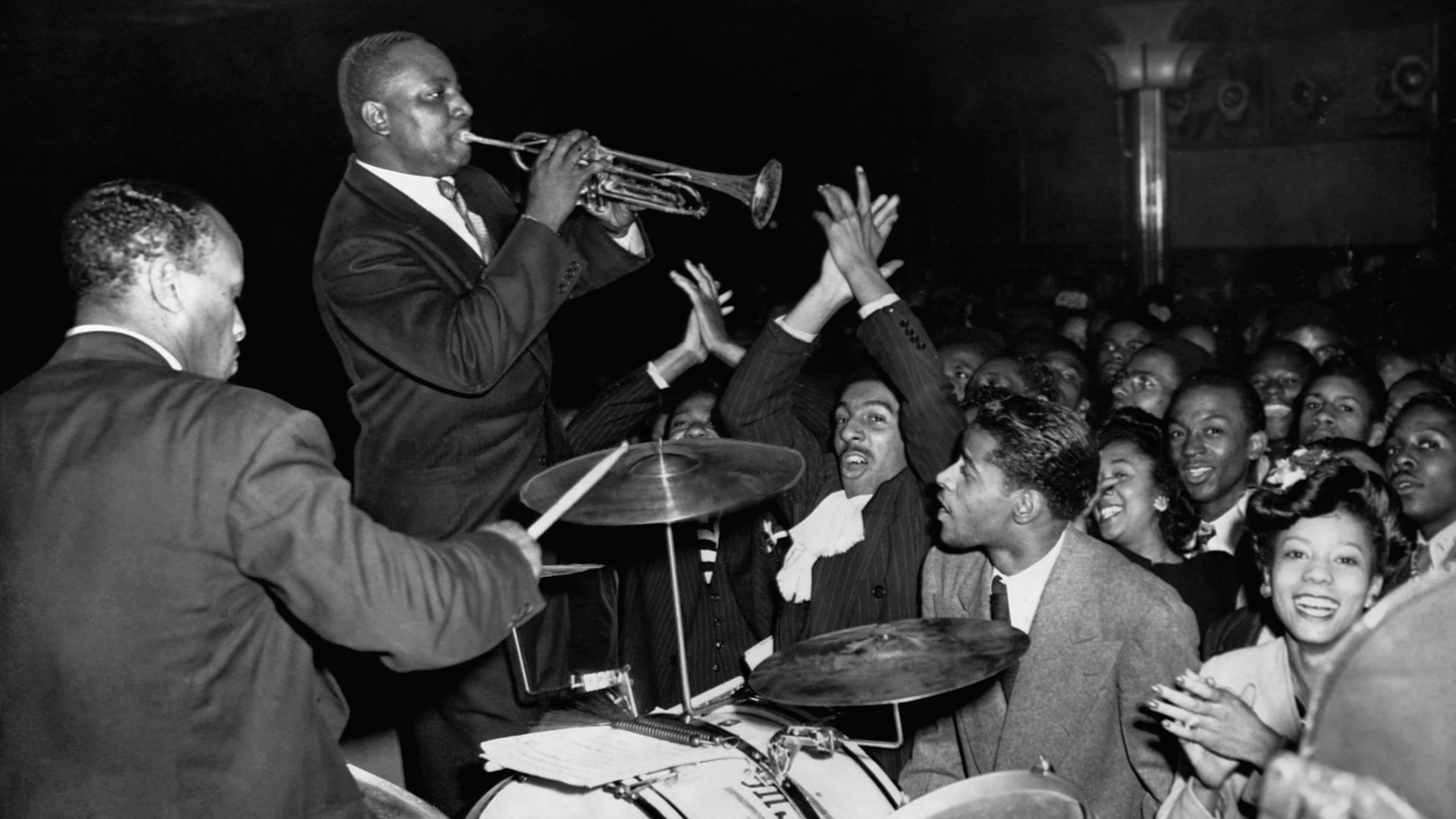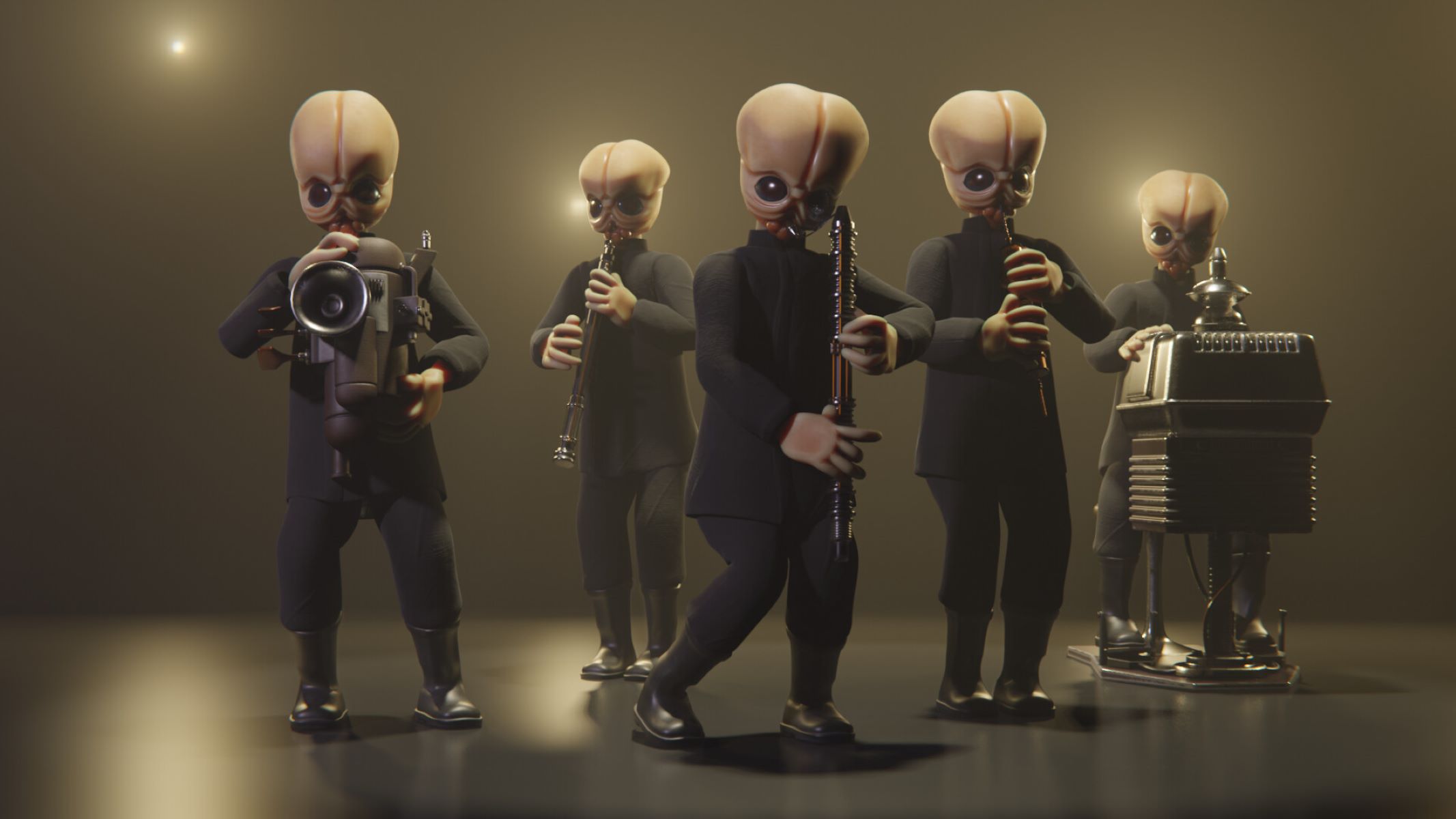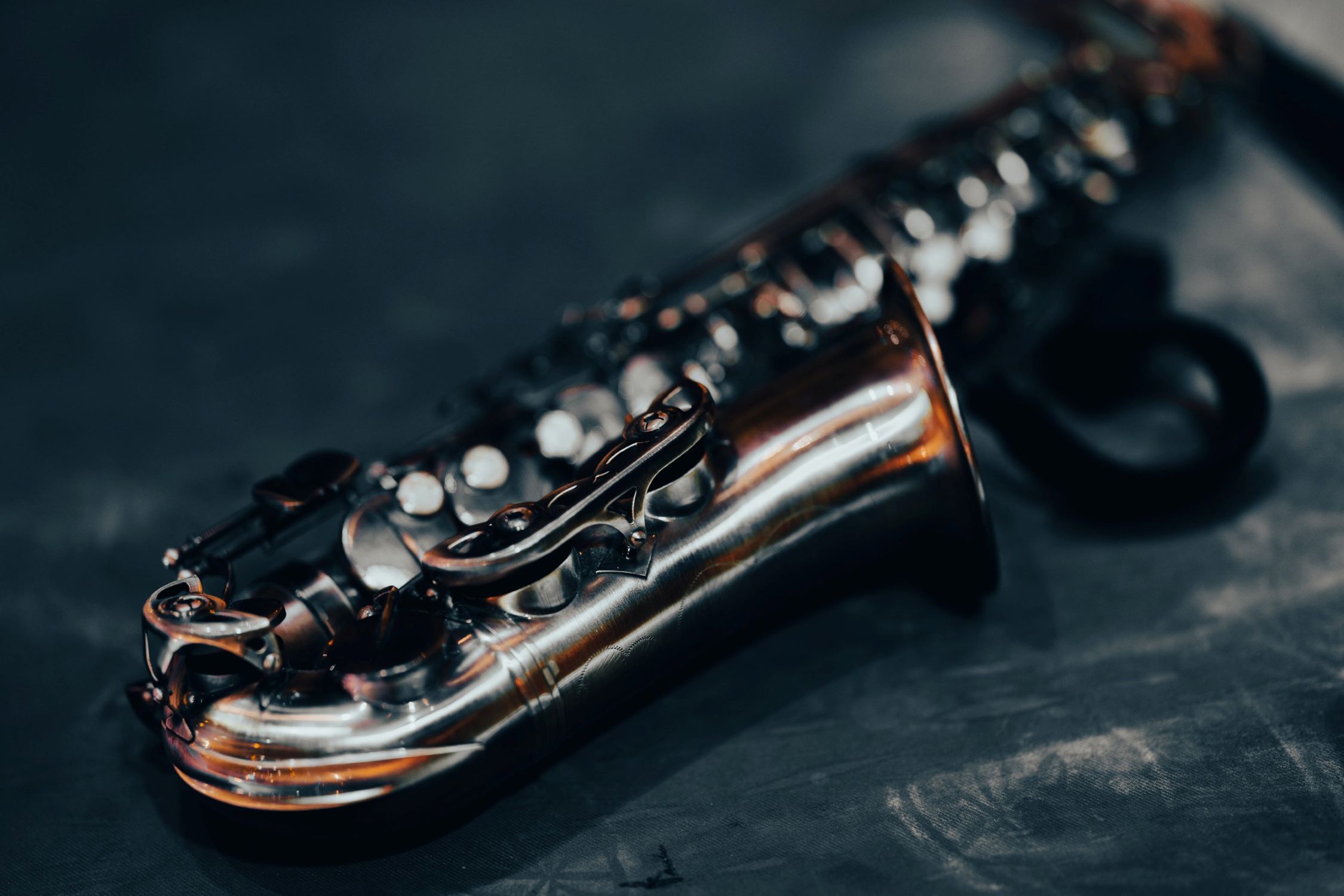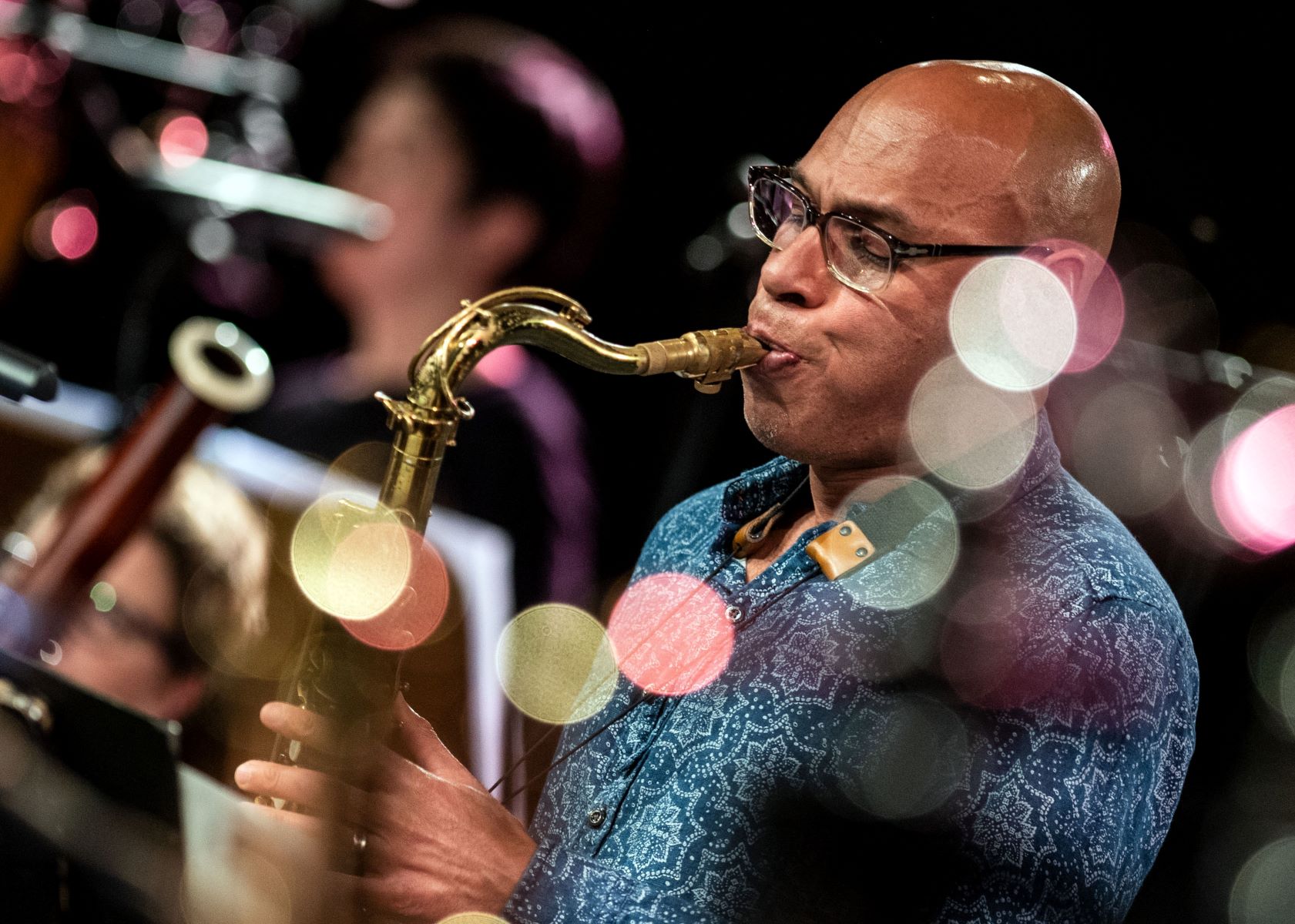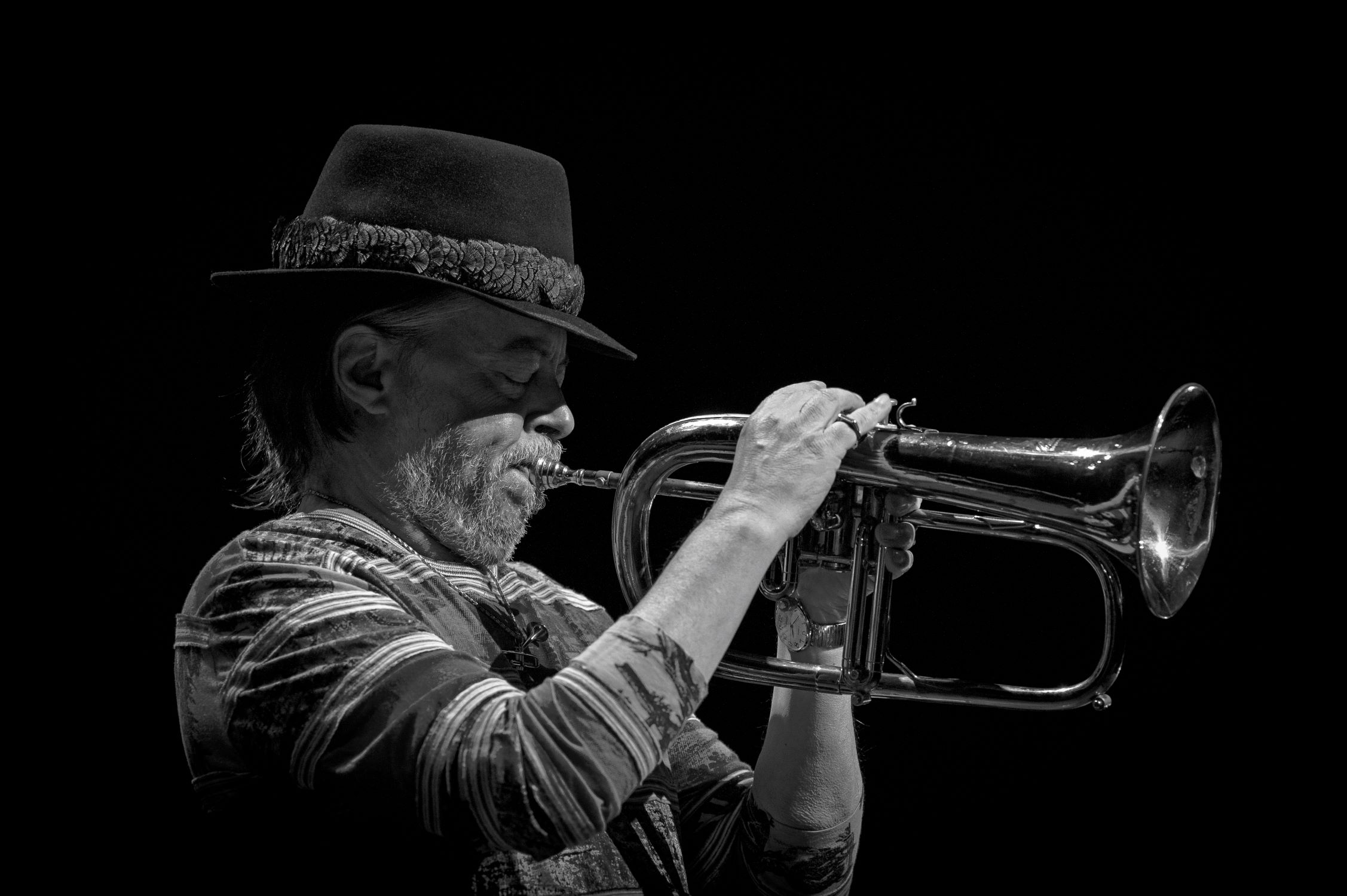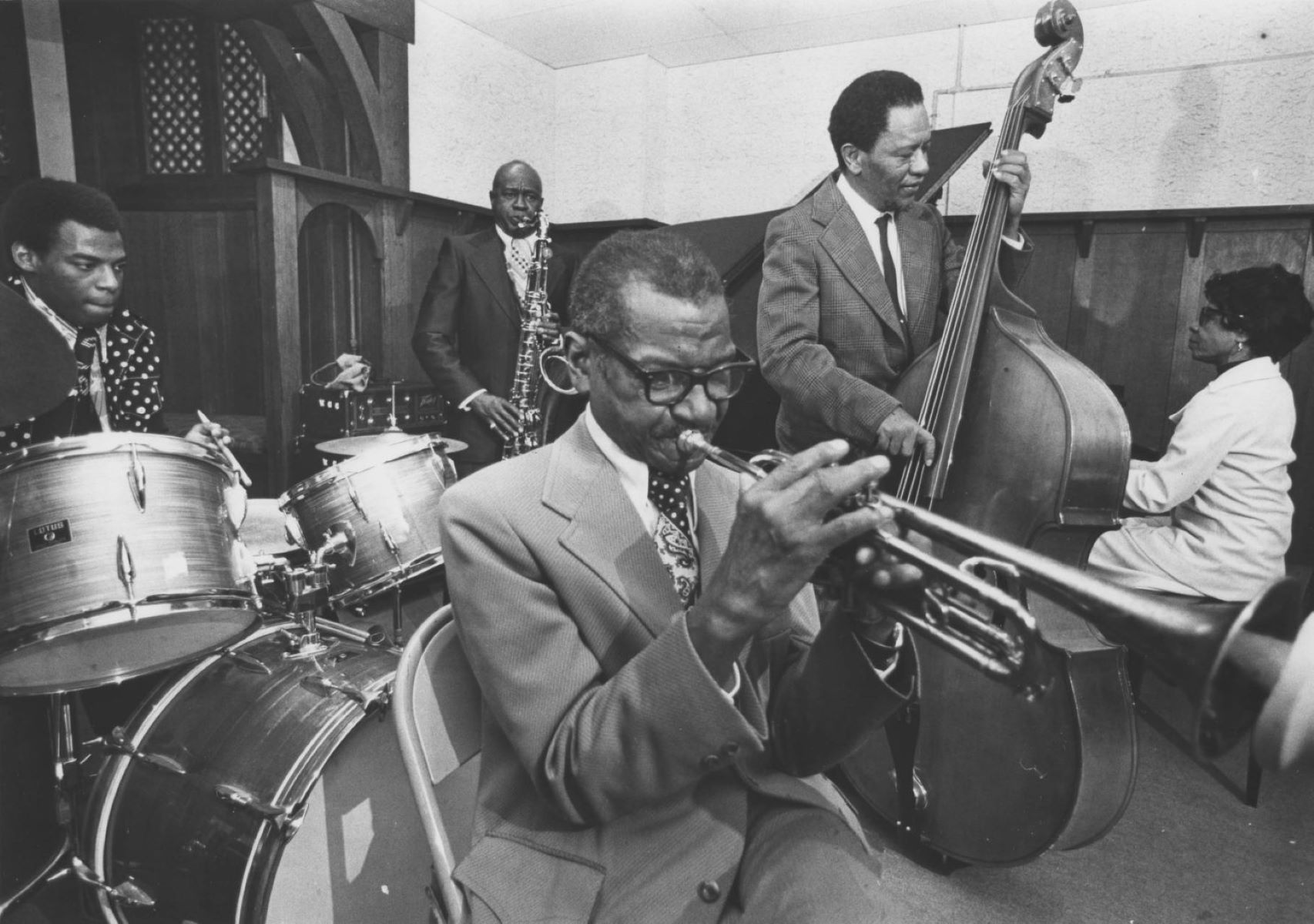

Jazz
Why Was The 1920s Called The Jazz Age
Modified: February 18, 2024
Discover why the 1920s earned the name the Jazz Age. Explore the cultural explosion of jazz music that defined the era and shaped American history.
(Many of the links in this article redirect to a specific reviewed product. Your purchase of these products through affiliate links helps to generate commission for AudioLover.com, at no extra cost. Learn more)
Table of Contents
- Introduction
- The Roots of Jazz
- The Great Migration and the Spread of Jazz
- Harlem Renaissance and Cultural Explosion
- The Roaring Twenties and the Jazz Era
- Jazz Icons and Innovators of the 1920s
- The Impact of Technology on the Jazz Age
- The Prohibition and its Influence on Jazz
- Fashion, Art, and Entertainment in the Jazz Age
- The Legacy of the Jazz Age
- Conclusion
Introduction
The 1920s was a transformative decade in American history, characterized by rapid social change, cultural dynamism, and economic prosperity. This era, often referred to as the Jazz Age, was known for its vibrant music, energetic dance styles, and a newfound sense of freedom and rebellion. Jazz, with its unique blend of African rhythms, European harmonies, and improvisation, emerged as the defining sound of the time, capturing the spirit of the era like no other genre.
The Jazz Age was a period of innovation and experimentation, both musically and culturally. It was a time when African-American musicians, who had previously been marginalized, rose to prominence and brought their distinctive sound to the forefront of American popular music. The roots of jazz can be traced back to the late 19th century, with the fusion of African musical traditions and European musical elements in New Orleans.
As the 1920s unfolded, jazz music gained popularity and started to spread beyond the borders of New Orleans. This was largely due to the Great Migration, a mass movement of African Americans from the rural South to urban areas in the North, Midwest, and West. The migration brought together diverse cultures and musical influences, fostering an environment conducive to the growth and evolution of jazz.
One of the key cultural movements of the Jazz Age was the Harlem Renaissance, centered in the vibrant neighborhood of Harlem, New York. The Harlem Renaissance became a hub for African-American artists, writers, and musicians, who celebrated their heritage and contributed to the flourishing art scene. Jazz became a centerpiece of the Harlem Renaissance, as it encapsulated the spirit of Black creativity and resilience.
The Roaring Twenties, as the 1920s were often called, was a time of liberation and excess. The end of World War I brought about a sense of optimism and a desire to move away from the restrictive social norms of the past. Jazz music, with its infectious rhythms and lively melodies, became the soundtrack to this newfound sense of freedom.
During the 1920s, a number of iconic jazz musicians emerged, leaving an indelible mark on the genre and popular culture. Figures like Louis Armstrong, Duke Ellington, and Bessie Smith became household names, showcasing the virtuosity and creativity of jazz music.
Technological advancements also played a significant role in shaping the Jazz Age. The invention of the phonograph and radio made it possible for jazz music to be heard by a wider audience, further popularizing the genre. This accessibility allowed for the spread of jazz beyond its traditional roots, influencing a new generation of musicians and listeners.
Another notable aspect of the 1920s was the Prohibition, a nationwide ban on the production, sale, and distribution of alcohol. While the Prohibition aimed to curb social ills, it unintentionally gave rise to a thriving underground nightlife scene, often accompanied by jazz music. Speakeasies became hotbeds of cultural expression, where people gathered to dance, socialize, and listen to jazz bands.
The Jazz Age was not confined to just music. It permeated other aspects of popular culture, including fashion, art, and entertainment. The fashion of the era reflected the newfound freedom and rebellious spirit, with women embracing shorter hemlines, looser silhouettes, and bold accessories. Artists like Georgia O’Keeffe and Aaron Douglas captured the essence of the Jazz Age through their vibrant and dynamic works, while films and literature embraced the excitement and excesses of the time.
Even though the Jazz Age came to an end with the onset of the Great Depression in the 1930s, its legacy continued to influence subsequent generations of musicians and artists. Jazz music remains a cherished art form, renowned for its improvisational nature, rhythmic complexity, and emotional depth. The Jazz Age serves as a testament to the power of music to reflect and shape cultural movements, leaving an indelible mark on American history.
The Roots of Jazz
Jazz music has its roots in the rich cultural heritage of African Americans, European musical traditions, and the unique context of New Orleans in the late 19th century. It emerged as a vibrant and distinctive genre, combining elements of African rhythms, European harmonies, and improvisation.
The African influence on jazz can be traced back to the music of West African slaves who were brought to the United States. These slaves, hailing from tribes with strong musical traditions, brought with them a wealth of rhythmic patterns, vocal styles, and call-and-response singing. This rhythmic complexity became a defining characteristic of jazz music.
European musical traditions, particularly those of marching bands and classical music, also played a significant role in shaping jazz. The structured harmonies and melodic conventions of European music were incorporated into jazz compositions, creating a fusion of African and European musical elements.
New Orleans, a diverse and culturally vibrant city, was the birthplace of jazz. It served as a melting pot of different musical styles, with influences from French, Spanish, African, and Caribbean traditions. The city’s unique social environment, characterized by a mix of cultures and racial diversity, provided fertile ground for the development of jazz.
Jazz began to take shape in the late 19th century as brass bands started to incorporate improvised solos and syncopated rhythms into their performances. These early jazz bands, known as “creole bands,” consisted of a variety of instruments such as cornets, clarinets, trombones, and drums. They played a mix of ragtime, brass band music, and blues, setting the foundation for the future evolution of jazz.
One of the key figures in the early development of jazz was Buddy Bolden, a cornet player known for his powerful improvisations and energetic performances. Bolden’s innovative playing style and use of blues-influenced melodies laid the groundwork for what would become the essence of jazz improvisation.
Another pivotal figure in the development of jazz was Jelly Roll Morton. Morton, a pianist, composer, and bandleader, combined his classical training with the syncopated rhythms of ragtime and the blues. His recordings and compositions showcased the early sophistication and complexity of jazz music, earning him the title of “The King of Jazz” during his time.
The early 20th century saw the spread of jazz beyond New Orleans, as musicians from the city traveled and performed in other regions of the country. This led to the dissemination of jazz to cities like Chicago, New York, and Kansas City, where it continued to evolve and thrive.
Overall, the roots of jazz can be traced back to the fusion of African, European, and Caribbean musical traditions in New Orleans. The cultural diversity of the city, combined with the rhythmic complexity and improvisational nature of the music, laid the groundwork for the emergence of jazz as a distinct and influential genre.
The Great Migration and the Spread of Jazz
The Great Migration, a massive movement of African Americans from the rural South to urban areas in the North, Midwest, and West, played a significant role in spreading the influence of jazz across the United States. This mass migration, which took place from the early 20th century until the 1970s, was driven by factors such as economic opportunities, racial discrimination, and the hope for a better life.
As African Americans moved to cities like Chicago, New York, Detroit, and Kansas City, they brought their cultural traditions, including jazz music, with them. The mixing of different regional styles and influences resulted in the creation of new jazz variations, expanding the repertoire and popularity of the genre.
In cities like Chicago and New York, African American neighborhoods served as hotbeds for jazz innovation and creativity. These communities, such as Harlem in New York City and Bronzeville in Chicago, provided a supportive environment for musicians to hone their craft and showcase their talents.
Harlem, in particular, became synonymous with the Harlem Renaissance, a cultural movement that celebrated and uplifted African American art, music, and literature. Jazz music thrived during this period, as clubs, speakeasies, and dance halls in Harlem featured performances by emerging jazz artists.
In addition to the physical migration of African Americans, technological advancements played a role in spreading the influence of jazz. The invention of the phonograph and the mass production of records allowed for the recording and distribution of jazz music on a wider scale. This made it possible for people in rural areas and other parts of the country to listen to and be influenced by jazz music.
The popularity of jazz also received a boost from the rise of radio broadcasting. Radio stations began featuring jazz programs, exposing listeners across the nation to the vibrant and infectious sounds of the genre. This further propelled the spread and influence of jazz beyond its geographic origins.
As jazz gained popularity and recognition, white musicians started to embrace the genre and incorporate it into their own music. This cross-cultural collaboration and influence led to the development of a new form of jazz known as “Swing,” which became immensely popular in the 1930s and 1940s.
The Great Migration and the subsequent spread of jazz music had a profound impact on American culture. Jazz became a symbol of diversity, freedom, and cultural expression, transcending racial boundaries and serving as a unifying force during a time of great social change.
Today, the influence of the Great Migration and the spread of jazz can still be felt. The musical legacy of this era continues to inspire and shape contemporary jazz artists, and the cultural impact of this movement remains an important part of American history.
Harlem Renaissance and Cultural Explosion
The Harlem Renaissance was a cultural and intellectual movement that took place during the 1920s in Harlem, New York. It was a period of immense creativity and achievement for African American artists, writers, musicians, and intellectuals. The Harlem Renaissance marked a turning point in the recognition and celebration of Black culture, and it had a profound impact on the development of jazz music.
During the Harlem Renaissance, Harlem became a vibrant hub for African American artistic expression. The neighborhood attracted and nurtured a wide range of talented individuals, who sought to explore and celebrate their racial heritage through various art forms.
One of the most significant contributions of the Harlem Renaissance was its impact on jazz music. Jazz became an integral part of the vibrant nightlife scene in Harlem, with clubs and speakeasies featuring live jazz performances. Famous venues like the Cotton Club and the Apollo Theater showcased the talent and creativity of African American jazz musicians.
Jazz music provided a powerful vehicle for self-expression and cultural pride during this time. Musicians like Louis Armstrong, Duke Ellington, Bessie Smith, and Ella Fitzgerald emerged as jazz icons, captivating audiences with their innovative compositions and mesmerizing performances.
Moreover, the Harlem Renaissance offered a platform for collaboration and cultural exchange. Musicians from different backgrounds and regions would come together in Harlem, sharing their unique styles and influencing one another. This cross-pollination of ideas and musical traditions gave rise to new and innovative jazz forms.
The Harlem Renaissance was not limited to jazz music alone. It encompassed various art forms, including literature, visual arts, dance, and theater. Writers such as Langston Hughes, Zora Neale Hurston, and Countee Cullen produced groundbreaking works that explored the African American experience and challenged societal norms.
Visual artists like Aaron Douglas and Jacob Lawrence incorporated elements of African art and culture into their paintings, creating powerful visual narratives that celebrated Black identity. Notable dancers and choreographers, such as Katherine Dunham and Josephine Baker, brought African-inspired movements to the forefront of American dance.
The cultural explosion of the Harlem Renaissance had a resounding impact on American society. It challenged prevailing stereotypes and racial prejudices, fostering a newfound appreciation for African American contributions to the arts and culture.
While the Harlem Renaissance was ultimately a relatively short-lived movement, its influence on jazz music and American culture as a whole cannot be overstated. It laid the foundation for future generations of African American artists and musicians, inspiring them to continue pushing boundaries and redefining artistic expression.
Today, the Harlem Renaissance serves as a testament to the power of artistic expression and cultural movements in shaping society. It remains a vital chapter in the history of jazz music, exemplifying the transformative potential of art to challenge and transcend societal barriers.
The Roaring Twenties and the Jazz Era
The 1920s, often referred to as the Roaring Twenties, was a decade of cultural and social change in America. It was a time of economic prosperity, technological advancement, and a newfound sense of liberation. At the heart of this transformative era was the emergence of jazz music as the defining sound of the time.
The Roaring Twenties marked a departure from the traditional social norms and values of the past. Following the end of World War I, people were eager to embrace a new sense of freedom and individuality. Jazz, with its infectious rhythms, improvisation, and lively melodies, perfectly captured the spirit of this era.
Jazz music became synonymous with the vibrant urban lifestyle of the 1920s. It was the soundtrack to the lively dance crazes that swept the nation, such as the Charleston and the Black Bottom. Jazz bands and musicians performed in speakeasies, dance halls, and theaters, providing entertainment and joy to people seeking to let loose and escape the constraints of everyday life.
The popularity of jazz permeated all levels of society. It was not limited to African American communities but embraced by people of all races and backgrounds. The inclusiveness of jazz served as a symbol of unity and cultural fusion, as people came together to appreciate and enjoy the music.
The Jazz Age also saw the emergence of iconic jazz musicians who would leave an indelible mark on the genre. Louis Armstrong, known for his virtuosic trumpet playing and unique vocal style, became a pioneering figure in jazz music. His contributions to improvisation and swing laid the foundation for future generations of jazz musicians.
Duke Ellington, a composer, bandleader, and pianist, was another influential figure of the Jazz Era. His orchestra, known as the Duke Ellington Orchestra, showcased his innovative compositions and arrangements, pushing the boundaries of jazz and expanding its reach.
Bessie Smith, often referred to as the Empress of the Blues, was a trailblazing female jazz and blues vocalist. Her powerful voice and emotional delivery captivated audiences and elevated the role of women in jazz music.
The Jazz Era coincided with the Prohibition era, a nationwide ban on the production, sale, and distribution of alcohol. Speakeasies, illegal establishments where alcohol was secretly served, became popular venues for jazz performances. This prohibition created an environment of rebellion and excitement, further fueling the allure of the Jazz Age.
Technological advancements played a significant role in the popularity and spread of jazz during this time. The invention of the phonograph and the mass production of records allowed for a broader audience to enjoy and appreciate jazz music. Radio broadcasting also became increasingly prominent, introducing a wider range of listeners to the rhythms and melodies of jazz.
However, the Jazz Era was not without its detractors. Some viewed jazz as immoral and detrimental to society, associating it with the loosening of morals and the breakdown of traditional values. Despite this criticism, jazz continued to thrive and define the cultural landscape of the 1920s, leaving a lasting legacy on American music and culture.
The Roaring Twenties and the Jazz Era represented a period of exuberance, creativity, and social change. Jazz music, with its infectious rhythms and vibrant energy, captured the spirit of the era and became a symbol of freedom, rebellion, and cultural transformation.
Jazz Icons and Innovators of the 1920s
The 1920s, also known as the Jazz Age, witnessed the rise of several iconic jazz musicians who pushed the boundaries of the genre and left an indelible mark on the history of music. These jazz icons and innovators embodied the spirit of innovation and creativity that defined the era.
Louis Armstrong is widely regarded as one of the most influential figures in jazz music. His virtuosic trumpet playing, distinctive voice, and charismatic stage presence made him a trailblazer in the genre. Armstrong’s innovative improvisation techniques, such as his use of scat singing and syncopated rhythms, revolutionized jazz and laid the foundation for future jazz musicians.
Duke Ellington, the renowned composer, pianist, and bandleader, was another instrumental figure of the Jazz Age. Ellington’s compositions blended elements of jazz, swing, and classical music, pushing the boundaries of the genre and showcasing his exceptional talent as a composer and arranger. His orchestra, the Duke Ellington Orchestra, became synonymous with sophistication and elegance in jazz music.
Bessie Smith, known as the Empress of the Blues, was a trailblazing female vocalist who left an indelible mark on jazz and blues. With her powerful voice, emotive delivery, and commanding stage presence, Smith became one of the most popular and successful recording artists of the 1920s. She brought a raw and heartfelt expression to her music, influencing generations of jazz and blues singers.
Jelly Roll Morton, a pianist, composer, and bandleader, was a key figure in the evolution of jazz from its early New Orleans roots to a more sophisticated and complex style. Morton’s innovative compositions, such as “Black Bottom Stomp” and “King Porter Stomp,” showcased his mastery of syncopation and intricate arrangements. His recordings and performances laid the groundwork for the development of swing and modern jazz.
Bix Beiderbecke was a talented cornetist and pianist who contributed to the development of jazz in the 1920s. His lyrical and innovative playing style, influenced by both classical and jazz music, set him apart from his contemporaries. Beiderbecke’s tragic life and early death added an air of mystique to his legacy, solidifying his status as a jazz legend.
Notable innovators of the 1920s also include Coleman Hawkins, a pioneering tenor saxophonist known for his technical mastery and extended improvisations, and Earl Hines, a pianist renowned for his virtuosic playing and innovative use of syncopation.
These jazz icons and innovators of the 1920s pushed the boundaries of the genre, introducing new techniques, compositions, and improvisational styles that revolutionized jazz music. Their contributions laid the foundation for the continued evolution and growth of jazz, shaping the course of music history and leaving a lasting legacy that can still be felt and appreciated today.
The Impact of Technology on the Jazz Age
The Jazz Age of the 1920s was not only defined by the cultural and social changes of the time but also by significant advancements in technology. These technological innovations had a profound impact on the development, popularity, and accessibility of jazz music, shaping the course of the era.
One of the key technological advancements that influenced the Jazz Age was the invention of the phonograph, or record player. This revolutionary device allowed for the recording and playback of sound, making it possible to capture and distribute jazz music on a mass scale. Jazz recordings could now be enjoyed in the comfort of one’s home, introducing the genre to a wider audience and contributing to its growing popularity.
The mass production of records also played a crucial role in the dissemination and preservation of jazz music. Record labels, such as Columbia, Victor, and Brunswick, actively sought out and signed jazz musicians, allowing their music to be recorded and distributed to a wider audience. This increased exposure of jazz through records helped to propel the genre into the mainstream and solidify its place in popular culture.
In addition to the phonograph, radio broadcasting emerged as a prominent form of entertainment during the Jazz Age. The widespread adoption of radio receivers allowed for the transmission of live music, including jazz performances, to people’s homes. Jazz programs, such as “The Cotton Club” and “The Paul Whiteman Orchestra,” brought the vibrant sounds of jazz to listeners across the nation, further popularizing the genre and fostering a sense of connection and shared experience.
The influence of radio extended beyond the borders of the United States, as broadcasts reached international audiences and introduced jazz to new parts of the world. This global reach significantly contributed to the recognition and appreciation of jazz as a distinct and influential genre.
Technological advancements also had a direct impact on the creation and performance of jazz music. The development of electric instruments, such as the electric guitar, amplified the sound of jazz bands and allowed for greater volume and tonal range. This innovation enhanced the dynamism and energy of jazz performances, further captivating audiences and contributing to the electrifying atmosphere of the Jazz Age.
Another important technological advancement of the era was the advent of sound film and the synchronization of sound with motion pictures. This allowed for jazz music to be incorporated into films, providing a visual and auditory spectacle that showcased the vibrant energy of the genre. Movies like “The Jazz Singer” and “Stormy Weather” not only featured jazz performances but also played a role in popularizing jazz and bringing it to a wider audience.
The impact of technology on the Jazz Age cannot be underestimated. It transformed the way people heard, enjoyed, and interacted with jazz music. The phonograph, radio, electric instruments, and sound film all contributed to the growth and influence of jazz during this era, shaping its development and ensuring its lasting legacy in the annals of music history.
The Prohibition and its Influence on Jazz
The Prohibition era, which lasted from 1920 to 1933, had a profound influence on American society, including the development and popularity of jazz music. The nationwide ban on the production, sale, and distribution of alcohol unintentionally gave rise to a thriving underground nightlife scene, bringing together illegal alcohol consumption, speakeasies, and the infectious sounds of jazz.
Speakeasies, secret bars that operated illicitly during Prohibition, became hotbeds of jazz music. These establishments provided a space for people to socialize, dance, and listen to live jazz performances. Chicago, New York City, and New Orleans were particularly known for their vibrant speakeasy culture, where jazz musicians filled the air with their energetic and improvisational melodies.
The Prohibition era’s illicit nature provided an atmosphere of rebellion and excitement, which aligned perfectly with the rebellious spirit of jazz music. Jazz became the preferred genre for speakeasies as its lively rhythms and energetic improvisation perfectly complemented the carefree and celebratory atmosphere of these hidden venues.
Moreover, the Prohibition era saw the emergence of a new form of jazz known as “Hot Jazz” or “Swing.” This style of jazz featured larger ensembles that incorporated elements of dance music and emphasized rhythm and syncopation. The swinging sounds of Hot Jazz, with its infectious beats and lively solos, became synonymous with the party-filled speakeasy culture.
Jazz musicians found steady employment in speakeasies, bringing their unique styles and interpretations to audiences eager to escape the restrictions of Prohibition. These underground venues provided jazz musicians with a platform to experiment and develop their skills, contributing to the evolution and refinement of the genre.
Notable jazz musicians of the era, such as Louis Armstrong, Duke Ellington, and Fletcher Henderson, gained fame and recognition through their performances in speakeasies. Their innovative playing styles and captivating stage presence added to the allure of the jazz scene and further solidified its association with the Prohibition era.
The popularity of jazz in speakeasies also played a role in breaking down racial barriers. African American jazz musicians, who had previously faced discrimination and segregation, found greater acceptance and respect in the underground world of speakeasies. Their incredible talent and the universal appeal of jazz helped bridge divides and foster greater appreciation for African American contributions to American culture.
While the Prohibition era came to an end with the repeal of the 18th Amendment in 1933, its influence on jazz lingered. Jazz music had become an integral part of the American cultural landscape, capturing the rebellious spirit, excitement, and fusion of cultures that defined the Prohibition era.
The Prohibition era’s impact on jazz can still be felt today. It brought jazz music into the spotlight, contributed to its popularity and growth, and solidified its place in American cultural history. The association between jazz and the illicit nightlife of the Prohibition era further added to the mystique and enduring appeal of the genre.
Fashion, Art, and Entertainment in the Jazz Age
The Jazz Age of the 1920s not only revolutionized music but also brought about significant changes in fashion, art, and entertainment. It was a time of cultural dynamism and freedom, reflected in the vibrant and innovative expressions of the era.
Fashion in the Jazz Age underwent a major transformation. Women, in particular, embraced a new sense of style and liberation. The iconic flapper look embodied the spirit of the era, with its dropped waistlines, short and loose-fitting dresses, and stylish accessories like feathered headbands and long necklaces. The flapper fashion represented a rebellion against the restrictive clothing of the past and became a symbol of the newfound freedom and independence of women.
Art flourished during the Jazz Age, with artists exploring new forms of expression and embracing the spirit of experimentation. The art movement known as Art Deco gained popularity, characterized by its sleek lines, geometric patterns, and bold colors. Artists like Georgia O’Keeffe, Stuart Davis, and Piet Mondrian created vibrant and dynamic works that captured the energy and glamour of the time. Art Deco influenced not only visual arts but also architecture, interior design, and even fashion.
Entertainment in the Jazz Age was a whirlwind of excitement and indulgence. The era was defined by a newfound sense of revelry and excess. Nightclubs, dance halls, and speakeasies boomed with lively jazz performances, attracting people from all walks of life. The Cotton Club in Harlem and the Savoy Ballroom in New York City were renowned for their electrifying jazz and dance parties, where people gathered to dance to the infectious rhythms, socialize, and escape the constraints of everyday life.
The popularity of jazz music fueled the rise of dance crazes, such as the Charleston and the Black Bottom. These energetic and rhythmical dance styles became synonymous with the Jazz Age, showcasing the exuberance and freedom of the era. Dance competitions and marathons became popular forms of entertainment, with participants striving to outlast others in endurance contests that could last for days.
Cinema also played a significant role in the entertainment landscape of the Jazz Age. The 1920s saw the emergence of the silent film era, with stars like Charlie Chaplin and Greta Garbo captivating audiences. As technology advanced, sound films, known as “talkies,” gained popularity, adding another layer of excitement to the movie-going experience. Films like “The Jazz Singer” and “Show Boat” incorporated jazz music into their soundtracks, further cementing the association between jazz and entertainment in the public consciousness.
The Jazz Age was a cultural phenomenon that extended beyond music. It encompassed fashion trends that challenged societal norms, artistic expressions that celebrated the energy and innovation of the era, and entertainment that provided an escape and a glimpse into the spirit of the time. These vibrant expressions of the Jazz Age continue to inspire and captivate audiences, serving as a window into a transformative era in history.
The Legacy of the Jazz Age
The Jazz Age of the 1920s left a lasting and influential legacy that continues to shape music, culture, and society to this day. This transformative era introduced new styles of music, challenged societal norms, and celebrated the African American cultural contributions that had been previously marginalized.
One of the most significant legacies of the Jazz Age is its impact on music. Jazz, with its unique blend of African rhythms, European harmonies, and improvisation, revolutionized the music industry. Its infectious rhythms and energetic melodies laid the foundation for future genres like swing, bebop, and fusion. Jazz continues to captivate listeners with its improvisational nature, rhythmic complexity, and emotional depth, making it one of the most revered and respected genres in the world.
The Jazz Age also played a crucial role in promoting racial and cultural diversity. The widespread popularity of jazz music helped break down racial barriers, as African American musicians gained recognition and respect for their contributions to American culture. The Jazz Age allowed for greater appreciation and celebration of African American artistry, leading to a greater acceptance and influence of Black culture in mainstream society.
The social and cultural changes of the Jazz Age also had a profound impact on societal norms and values. The era challenged traditional ideas of gender roles and social conventions. Women, in particular, experienced a newfound sense of liberation and independence, defying societal expectations through their fashion choices, involvement in the workforce, and participation in social and cultural activities.
The Jazz Age also left a significant mark on the visual arts. The Art Deco movement, which emerged during this era, revolutionized design and influenced architecture, interior design, fashion, and visual art. The sleek lines, geometric patterns, and bold colors of Art Deco continue to inspire modern design aesthetics.
Furthermore, the Jazz Age had an enduring impact on the entertainment industry. The era witnessed the rise of mass media and popular culture, with advancements in radio broadcasting, sound films, and the emergence of celebrity culture. Jazz music became an integral part of the entertainment landscape, captivating audiences and providing the soundtrack to the cultural and social changes of the time.
The legacy of the Jazz Age extends beyond its immediate impact. It continues to resonate in contemporary music, fashion, art, and popular culture. The innovations, creativity, and sense of freedom that defined the era have become ingrained in the collective consciousness and serve as a reminder of the power of cultural movements to shape society.
The Jazz Age serves as a testament to the enduring legacy of jazz music, the importance of embracing diversity, and the possibilities unleashed when artistic expression is given the space to flourish. It remains a pivotal chapter in American history, celebrated for its cultural contributions and as a symbol of an era defined by vibrancy, innovation, and cultural dynamism.
Conclusion
The 1920s, known as the Jazz Age, was a transformative era in American history, characterized by the cultural dynamism, artistic innovation, and social changes that defined the time. Jazz music emerged as the soundtrack to this vibrant and liberating period, capturing the spirit of the age like no other genre.
The roots of jazz can be traced back to a fusion of African and European musical traditions in New Orleans. From there, it spread across the country, fueled by the Great Migration and the cultural explosion of the Harlem Renaissance. Jazz became a symbol of cultural diversity, rebellion, and unity, paving the way for a new era of African American artistic expression.
The impact of technology played a significant role in the popularity and accessibility of jazz music. The invention of the phonograph and the development of radio broadcasting brought jazz to a wider audience, while advancements in sound film showcased the genre’s vibrant energy on the big screen.
The Prohibition era inadvertently contributed to the popularity of jazz, as speakeasies became vibrant havens for jazz performances. The rebellious nature of jazz aligned perfectly with the atmosphere of the era, and the genre became a symbol of resilience and cultural expression.
The Jazz Age also left a lasting legacy in fashion, art, and entertainment. The flapper fashion, Art Deco movement, and dynamic dance styles symbolized the spirit of liberation and experimentation that defined the era. Jazz icons and innovators like Louis Armstrong, Duke Ellington, and Bessie Smith pushed the boundaries of the genre, leaving an indelible mark on American music history.
The legacy of the Jazz Age can still be felt today. Jazz music remains an influential and celebrated genre, inspiring musicians and captivating audiences worldwide. Its impact on racial and cultural diversity, the breaking of societal norms, and the celebration of African American artistry continues to resonate.
The Jazz Age serves as a testament to the power of cultural movements to shape society. It represents a time of artistic freedom, creative expression, and societal change that has left an enduring mark on American culture and beyond. The Jazz Age will forever be remembered as a dynamic and transformative era in which jazz music, with its infectious rhythms and soulful melodies, set the stage for a new era of cultural innovation and artistic brilliance.

